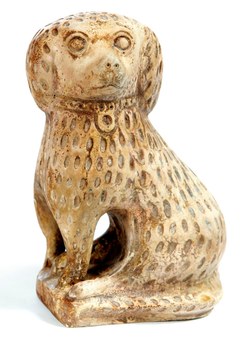Sewer Tile
Since the dawn of time, as long as there have been people, there has been sewage. And for almost as long, we’ve apparently been concerned with it. There is concrete (or clay, at least) evidence of this dating back as far as 4000 B.C.E. Babylon, known for many things – gardens, law, sin…, was also known as the birthplace of pipe, pipe that was formed of clay and baked.
Nearly six thousand years later, we still hadn’t changed pipe all that much. In the 19th century, sewer pipes were still typically fashioned by hand, glazed inside and out with a salt glazing, and then fired to the point of vitrification (when temperature fluctuations break molecular bonds and change the molecular structure). They held up well too, with examples of clay pipes being in active use for 100-150 years!
This type of pipe, sewer pipe, was actually used for a number of applications, including garden furniture and urns, chimney caps, planters, birdhouses and more. The most popular however are perhaps the pieces known as “end of day” objects, things the potters in the tile and pipe factories would hand-model from small amounts of leftover clay at hand as they were wrapping up their work for the day.

A sewer tile dog figure depicting a seated spaniel, attributed George Bagnall, Newcomerstown, Ohio. (p4A item # E8882722)
These pieces, which reflect the very essence of folk art – defined at least one way as pieces made by untrained artists without profit in mind, are often unique and highly prized by collectors. With the popularity of Staffordshire pottery dogs, seated spaniels molded in sewer tile are very common. Animals in general are very popular with lions, frogs, cats, pigs and squirrels appearing fairly regularly. Most pieces are unsigned, although even those with signatures are usually from unknown artists. The collectible value of sewer tile end of day pieces is influenced, like all pottery, by the condition, but the most significant factors are the originality of the piece and the detail with which it is rendered. More common forms like banks and planters can start at as little as $50, but unique pieces, like the Statue of Liberty, can bring $4,000 or more. Dogs (like the one pictured above) that are attributed to George Bagnall, who operated in Newcomerstown, Ohio and is one of the few known sewer tile artists, can also be an exception, fetching several thousand dollars at auction.
